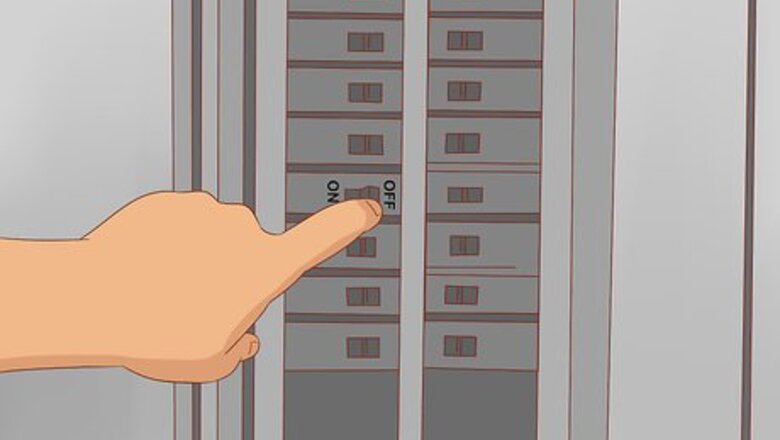
views
Removing the Old Disposal Unit
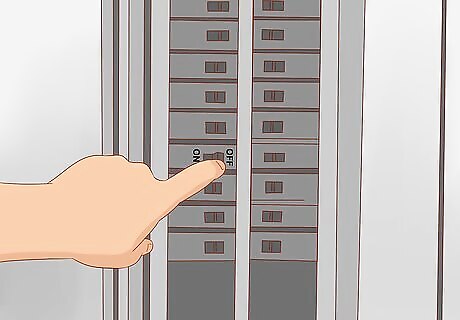
Turn off the power to the garbage disposal. Head to your home’s main circuit breaker and find the switch corresponding to the garbage disposal unit. Flip the switch to the “Off” position. You’ll now be able to work safely without worrying about accidentally receiving a nasty shock. Garbage disposals are electrical appliances, which means there’s a live current running through them at all time while the power is on. Make sure that the water is cut off to your garbage disposal, too.
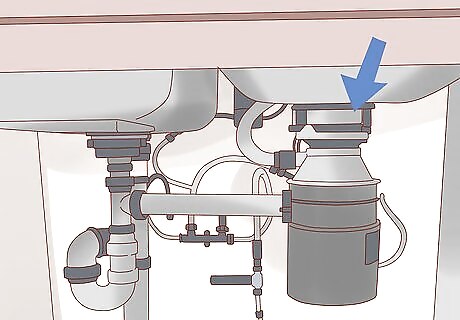
Identify your garbage disposal. Open the doors beneath your sink and take a look directly under the drain. You should see a large cylindrical object situated between the bottom of the drain and the plumbing pipes. This is the actual garbage disposal unit that you’ll be replacing. Take note of the make and model of the disposal. Replacing it with a similar model will be as easy as removing the existing unit and screwing on the new one.
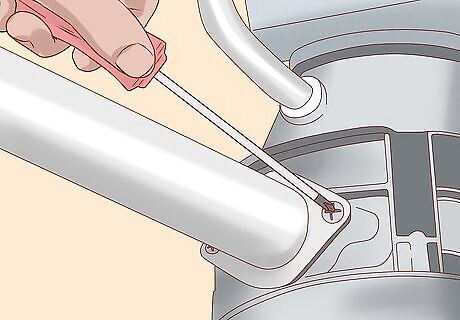
Disconnect the discharge tube. Locate the pipe extending from the side of the disposal into the ground plumbing. Loosen any nuts or fasteners at the pipe’s connection site and give it a firm tug to pull it free. The discharge tube is responsible for carrying ground food waste out of the disposal. Some older garbage disposals are also connected to the dishwasher water supply via a second tube. This one can be disconnected in the same manner.
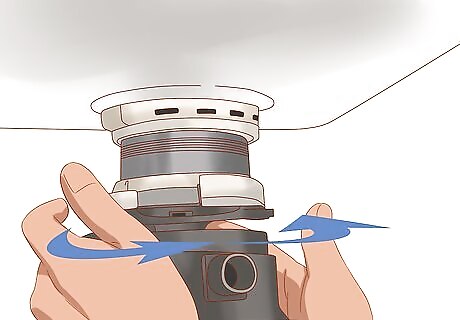
Release the old disposal from the mounting ring. At the top of the unit you should see a thin metal ring with 3 separate lugs, or protruding arms. Take hold of these lugs with one hand and twist the entire ring counterclockwise about 1.5 inches (3.8 cm) to dislodge the old unit. Set it aside on a sheet of newspaper or unfolded rag to keep from making a mess. Garbage disposals tend to be surprisingly heavy (some can weigh as much as 15 pounds!), so be ready to catch and hold the unit once it comes away from the mounting ring. It may be a good idea to place a couple paint cans, some wood scraps, or a stack of phone books beneath the disposal to act as a support platform.
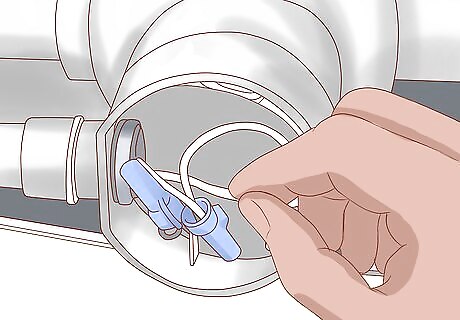
Separate the disposal from the power supply. Turn the unit over and look for the round or square faceplate on the underside. This is the cover for the electrical housing. Unscrew the faceplate and slip the copper ground wire over the green screw. Then, pinch the plastic wire connectors to disconnect the colored wires from the main power supply. A pair of needle-nosed pliers may come in handy for releasing wire connectors that are too small to unclip by hand.
Replacing Worn-Out Mounting Hardware

Pull off the existing mounting ring. Peel away the rubber snap ring on the bottom of the mounting ring that’s holding it in place. The mounting ring itself should then simply slide off. If there’s a separate gasket sandwiched above the mounting ring, be sure to remove it as well. Consider keeping your current mounting hardware if it looks to be in good shape. This will make installing the new disposal much quicker and easier.
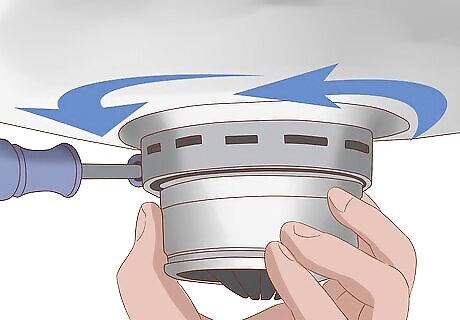
Loosen the nut securing the rest of the assembly. Just below the sink flange where the drain empties into the garbage disposal you’ll see a circular plastic piece similar in appearance to the mounting ring. Insert the tip of a screwdriver into one of the lugs on this piece and rotate it in a counterclockwise direction. Pull the nut away and set it aside. You may have to apply a considerable amount of force to undo a mounting nut that’s had years to settle into place. If you're having trouble getting it to budge, try pushing the handle of the screwdriver with both hands rather than pulling. You'll get better leverage this way.
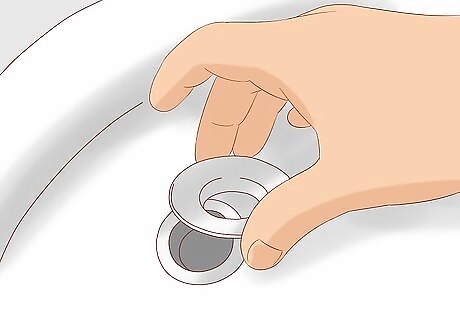
Remove the sink flange. The flange is the rounded metal rim that circles the drain opening. Wiggle or push on the bottom of the flange from underneath, then stand up and lift it out from the top. The old flange can also go into your pile of parts destined for disposal. If you see any dry, crusted remnants of plumber’s putty where the flange sat, use a putty knife to scrape it off. Pat the drain opening dry with a clean towel before attempting to use adhesive to secure the new flange.
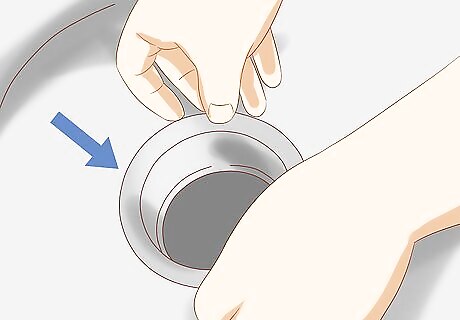
Install the new sink flange. Apply a ring of fresh plumber’s putty around the edges of the underside of the flange (the surface that will rest against the sink basin). Fit the slender end into the drain opening and press the flange firmly into position. Hold it for 30 seconds to a minute while the putty begins to set up. Use a heavy object, such as a toolbox or the old garbage disposal unit, to keep constant pressure on the new flange until the adhesive has had time to fully dry. This may take anywhere from 10-20 minutes, depending on the specific product you're using. The added weight will also prevent the flange from shifting as you install the new unit. You also have the option of using silicone sealant in place of traditional plumber’s putty. Many home improvement experts claim that silicone has a stronger hold and provides a longer-lasting watertight seal.

Connect the new mounting assembly. Working in reverse order now, slide a rubber gasket over the bottom of the new sink flange, followed by a second metal flange. Position the new mounting ring last and insert screws into each of the open screw holes. Hold the assembly in place with one hand while you tighten the screws up against the lower flange with the other. Jiggle the new mounting assembly gently from the bottom to make sure it’s secure.
Installing the New Disposal
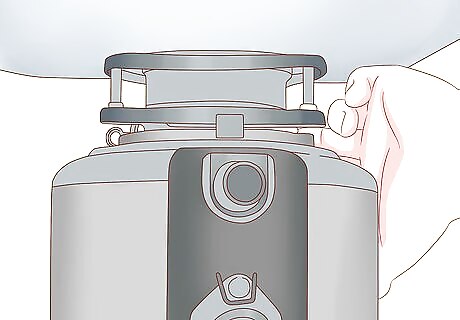
Secure the replacement disposal to the mounting ring. Lift the new unit into position, aligning the upper edge with the lower lip of the mounting ring. Twist the disposal to begin thread it into the grooves, then stick your screwdriver into 1 of the metal lugs and rotate the mounting ring clockwise until you feel the disposal lock in place. At this point, you can remove the weight you’ve been using to hold down the new sink flange.
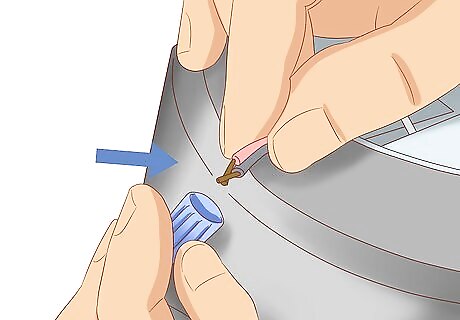
Reattach the electrical wires. Unscrew the faceplate on the underside of the new unit. Match the colored wires on the power supply to those in the disposal’s electric housing and connect them using plastic wire nuts. Slip the copper grounding wire over the green screw at the far edge of the compartment. Replace the cover and tighten the screws. Most garbage disposals only have 2 sets of connections—a pair of red wires and a pair of white or black wires. Any additional wires should also be color-coded for convenience.This will make putting them back together a breeze. For your own safety, it’s critical that the main power to the disposal remain off throughout this process.
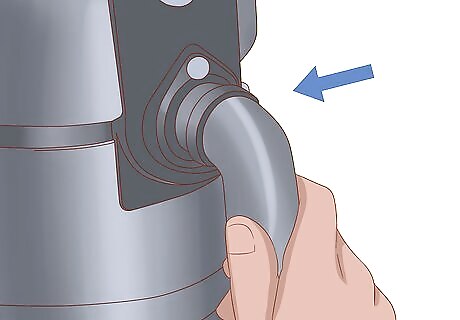
Reconnect the discharge tube. Align the end of the tube with the valve on the side of the new disposal unit and push it until sits flush over the opening. Tighten any nuts or other fasteners. For flexible hose connections, consider using a separate metal clamp to cinch the discharge tube to the disposal valve.
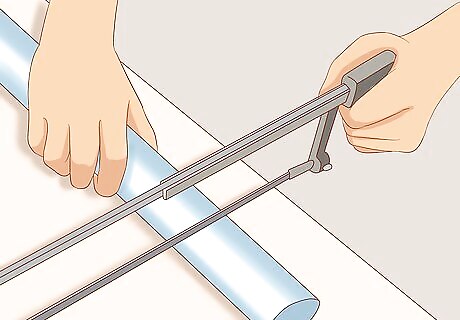
Trim the discharge tube as needed. If you’ve upgraded to a larger disposal or one of a different model, there’s a good chance that the discharge tube won’t be the right length to connect to the ground plumbing valve. Fortunately, this is a simple fix—mark the spot on the tube where it should line up with the drain pipe, then cut it to size with a hacksaw. It should be a perfect fit. If the discharge tube is too short to accommodate the new unit, you’ll need to make a trip down to your local home improvement store to pick up a new one with the appropriate dimensions.
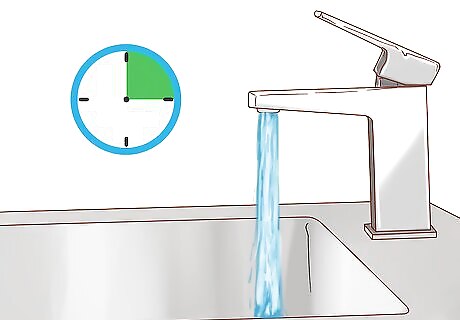
Run water through the disposal to check for leaks. Turn on the faucet and let it run for 15-20 seconds. While it’s running, examine each of the connection sites around the new unit and make sure there’s no water seeping out. Assuming the individual components are nice and snug, you shouldn’t have any problems. Patch up any minor leaks you find using a strip of thread seal tape or a line of Teflon pipe joint compound. Before tackling a leak, don’t forget to dry off the plumbing fixtures so that the adhesive will be able to stick.

Test the new disposal. Go back and flip the breaker for the garbage disposal into the “On” position. Return to the kitchen and flip the switch for the disposal to activate it. Listen to the way it sounds. It should run smoothly with no humming, grinding, or excessive vibration. Congratulate yourself on a job well done! Double check that you haven’t left any tools, screws, or other stray pieces in the sink. You don’t want them to fall down the disposal! If the new disposal is making unusual noises or doesn’t seem to be operating correctly, call a professional plumber and have them take a closer look at it. There may be an issue with the inner mechanics of the unit itself.



















Comments
0 comment